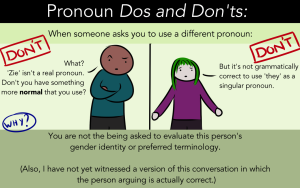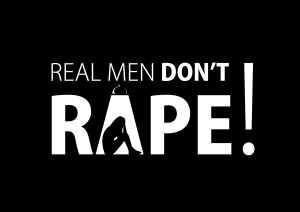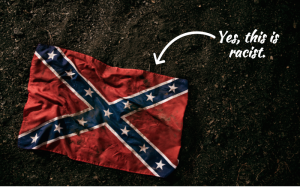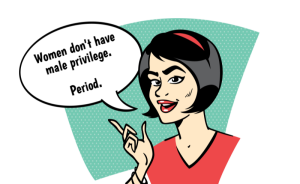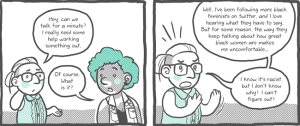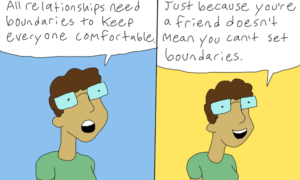
Source: Earlville Opera House
I recently had a conversation with a friend about why I don’t recognize most Western celebrations or holidays – not from a religious or patriotic sense, anyway.
In general, I like the idea behind winter-time celebrations such as New Years, Thanksgiving, Christmas, Presidents Day, and major football mashups, and so on. And in the spirit of family and giving and community, I bestow gifts and cook and partake of feasts and enjoy the days off work.
However, I can’t get behind the hypocritical, capitalistic agenda that pushes these events into the realm of frenzied zealotry.
The pressure to spend money I don’t have to buy crap my loved ones and I don’t need for the sake of “Merry Christmas and Nothing Else” isn’t my kind of party. I’m also not here for year-end benders, professional sports worship, and furniture sales honoring a POTUS birthday.
The glow of plastic happiness and ignorant observation of historically suspect people and occurrences contrast starkly with very real and very dark events in Native American (and United States) history — many of which happened during these cold months.
I described some of these horrors to my friend, explaining how the onslaught of toys and alcohol ads overwhelmingly clash with my need to grieve and process atrocities like those at Sand Creek, Wounded Knee, Mankato, and others.
In response, my friend asked if it was time to “get over” these long-ago events and focus on what really matters.
Cue the crickets.
I know my friend means well. I think when people, like her, drop the “get over it” bomb, they are trying to prove how much they care about what’s occupying my headspace — even though it seems more like they’re trying to tell me what’s important.
But this phrase gets tossed around too frequently for people who have experienced trauma.
I want to talk about why these past wrongs still very much impact Native lives today, why telling us to “get over it” doesn’t help, and direct your attention to what can help.
1. Remember Wounded Knee, Sand Creek, and the Dakota 38
These three events were once considered great victories by the US government, and medals of honor and other accolades were awarded to some of the soldiers who participated.
This was partly because all three occurred during the government’s Indian removal period spurred by Manifest Destiny (the idea of a superior nation expanding its borders westward to promote Christianity and ridding the land of Indian savagery). Many saw these victories as a means to progress.
But these were massacres — acts of genocide that killed hundreds of men, women, and children in the dead of winter and demoralized generations of Native people. The government-sanctioned slaughter of innocents outside of wartime proved a winning strategy against tribal people.
Learning about these events can help explain why some Native people have difficultly reconciling these horrors with the festivities around us. I will provide the bare bone essentials of what happened below, but I implore you to visit the links for full histories.
But first, I want to provide some emotional context.
I’ve spent years researching these events on an academic and spiritual level. Year after year, I listen to tribal elders — whose burden it is to share these stories with new generations — and our tears still burn with sadness and rage at what we lost.
If I learned about these in school at all, my teachers and history books would talk about military might and cunningness in these “battles” and “clashes.” I remember feeling embarrassed those soldiers faced “bad” Indians and promised I’d never cause that kind of trouble. It shames me now to share those feelings here.
So, in describing these massacres, it’s necessary to me that I provide you with as many facts as possible, as they clearly demonstrate the unfairness, the brutality, and the loss Native people experienced in the name of progress.
Dakota 38
After the short-lived US-Dakota War of 1862 — fought to control territory and resources – the government convicted and sentenced 300 Dakota warriors to death for their parts in the war. President Abraham Lincoln stepped in, taking issue with the spotty “evidence” against the convicted. In the end, 38 of the prisoners of war were hanged.
The hero worship of Lincoln is baffling when you consider the context. After the Civil War ended, not one Confederate leader or soldier was condemned to die under Lincoln. But on December 26, 1862, he ordered what reigns as the largest mass execution in US history for the Dakota 38 in Mankato, Minnesota.
Sand Creek
Heeding calls for friendly Indians to take refuge (or risk being exterminated as a perceived hostiles), about 1,000 Cheyenne and Arapaho allies — including women, children, and the elderly — made camp at Sand Creek in Colorado to talk peace with authorities.
As the sun rose on November 29, 1864, troops led by Colonel John Chivington attacked the camp, despite the US and white flags being flown above lodges and waived by those fleeing.
In the end, at least 150 Native people were slaughtered. Troops burned the village and paraded their victims’ body parts to showcase the victory in Denver.
Wounded Knee
The last of whatever resistance Native people carried bled out on December 29, 1890, when the US Army’s 7th Calvary surrounded a refuge-seeking, cold, and starving band of Lakota near Wounded Knee Creek in South Dakota.
Most sources say a shot rang out, allegedly from the Native side, and the cavalry opened fire. It’s estimated anywhere from 150 to 300 Native people were massacred and many were laid in a mass grave; the military lost 25 men.
It’s important to note that each of the 560-plus tribes still around the US today have their own histories and traumas that are separate from those of the above mentioned Dakota, Cheyenne, Arapaho, and Lakota peoples.
Those three histories in no way cover the depth of the atrocities Native people suffered and remember — including the Long Walk of the Navajo, the Cherokee Trail of Tears, the Pequot (or Mystic) Massacres, the Gnadenhutten Massacre, the Washita Massacre, and the Garrison Dam. The list is expansive.
2. Don’t Tell Me to Get Over It
It’s interesting: I talk about the events of mass hanging and massacres in my people’s history, and I’m told to “get over it.” But mention Pearl Harbor or 9/11, and the rallying cry is “Never forget!”
Why the double standard?
Discussing trauma and its effects is difficult in and of itself, but one of the worst responses to processing pain is the message that one can and should choose to let it go. Simply saying you’re not going to care anymore doesn’t mean the problems or issues go away.
Beyond suggesting repression, what you’re really saying when you tell me to get over it is that because you don’t see it as a problem, I shouldn’t either. That totally dismisses my feelings, my pain, and my ability to cope with trauma in ways that work for me as an individual.
In short: Telling me to get over it isn’t helpful. It’s harmful.
What is helpful is acknowledging the reality of a person’s feelings, learning about and trying to address the trauma, and encouraging positive coping methods. All of these validate the person and their emotions, which can be a huge step toward healing and enjoying an emotionally successful life.
Pretending the trauma didn’t happen or doesn’t exist now isn’t an option: It did happen and the trauma exists in a very present sense. For Native people like me, the latter is thanks in part to modern systems of oppression set up to remind us — annually and daily — of our many sufferings.
3. Understand That the Oppression Is Still Happening (And That Modern Native People Experience Trauma Related to Past Events)
The end of the Indian Wars brought an onslaught of US government policies meant to assimilate Native people into American culture.
Assimilation: The American word for cultural genocide.
Defeated and dispirited from the massacres listed above (not to mention the rapid loss of — and disconnection from — the land, traditional food sources, and more) there wasn’t much Native people could do but survive each assimilation policy as it crashed into us.
These laws were vast and varied. (Check out the Dawes Act of 1887, the Indian Citizenship Act of 1924, the Urban Relocation Program of the 1950s, or Indian termination policies of the 50s and 60s for a primer on WTF Indian policies).
I believe there was no greater evil inflicted upon Native people than the forced removal of their children into government and church-run boarding schools.
I have relatives who are products of Indian boarding schools, and I’ve listened to and researched first-person accounts of the abuse and destruction children and babies endured. I am talking about the rape, physical and emotional torture, and starvation of our most innocent and vulnerable beings.
People think the Hunger Games is some far-off dystopian future, but the metaphor for real-life events is there.
The United States government stole Native children from their homes and put them in arena-like boarding schools where they experienced unspeakable horrors in the name of some law meant to keep the districts — I mean the reservations — in-line.
I’ve worked with Native families for several years now and am pained by how boarding schools diluted the ways we relate to each other today:
- Because our elders were taught to fear their own language and spirituality, many in my generation and younger never learned Lakota communication or ceremony.
- Children, some stolen as babies, were released as traumatized teens disconnected from their parents, dismantling traditional family structures over several generations.
- Violence is pervasive in Native communities. I’ve worked with moms who tell their daughters what to do when they’re raped, not if. Why? Because one-in-three Native women will experience rape or assault in her lifetime.
- In South Dakota and other states with higher Native populations, we “joke” that the fastest growing Native community isn’t a town or reservation, but prison.
- The public education system continues to fail Native youth. The latest national figures show Native people with the lowest graduation rates (67%).
- Our people haven’t learned positive ways to cope. Native youth suicide is an epidemic at more than three times the national average (reservation communities experience ten times the national rate).
But these troubling trends aren’t really a surprise, given the trauma we’ve experienced from massacres to genocidal education to current systemic oppression. When it comes to graduating high school, going through life without rape or disease, or even staying out of jail, the odds definitely aren’t in our favor.
In the Hunger Games, district youth are dehumanized via gladiator-like entertainment to desensitize the masses to district miseries. Similarly, Native people today witness their cultures and representations appropriated by Hollywood, professional sports, and the fashion and music industries.
It’s easy to overlook past and present transgressions of a people downgraded to mascot.
4. Support Present-Day, Tribally Led Endeavors Seeking to Heal Wounds of the Past
Tribal communities have been working on some great, local projects to combat things like youth suicide and violence.
In South Dakota, some of my favorites include the Tatanka Wakpala Model Sustainable Community, the Cheyenne River Youth Project, Lakota Solar Enterprises, and Lakȟól’iyapi Hoȟpí, a Lakota language immersion preschool. So many others are doing great work, and all survive via grants and donations.
Social media has played a huge role in promoting these efforts and has transformed into a sort of contemporary Native healing process, as well as getting mainstream attention for Native issues.
For instance, the mass execution in Mankato is a big part of American history rarely discussed, and would probably still be untouched in the media if it weren’t for Dakota 38, a documentary released just a few years ago and available for free download and streaming.
It follows the Dakota 38+2 Memorial Ride, a two-week, 330-mile horseback ride beginning mid-December, which has occurred annually since 2005 to promote healing and reconciliation. If you’re able, a financial contribution during this giving season is a great way to support the memorial ride and its mission.
Other great documentaries that shed light and encourage wellness include The Thick Dark Fog, about a boarding school survivor, Reel Injun, which takes Hollywood’s appropriation of Native culture to task, and The Crazy Horse Project, a film-in-progress discussing past and modern day Lakota warrior mentality while following the annual Crazy Horse Ride (penned and co-produced by yours truly).
Check out other popular indigenous social media campaigns to jump on here.
***
The massacres of yesteryear have left deep scars in the psyche of many Native people today. We are surviving not only past violence, but the fallout created by those massacres, including Indian assimilation policies and modern forms of systemic oppression.
How can you help indigenous people remembering or reliving trauma during the joyous holiday season?
Learn about these traumas, including the historical context surrounding the events, and the modern systems at work today that trigger stress for Native people. Consider supporting Native-led efforts promoting wellness within tribal communities.
And never tell us to get over it.
[do_widget id=”text-101″]
Taté Walker is a Contributing Writer for Everyday Feminism. She is a Mniconjou Lakota and an enrolled citizen of the Cheyenne River Sioux Tribe of South Dakota. She is a freelance journalist who lives in the Colorado Springs area. She blogs at Righting Red and can be reached on www.jtatewalker.com.
Search our 3000+ articles!
Read our articles about:
Our online racial justice training
Used by hundreds of universities, non-profits, and businesses.
Click to learn more







